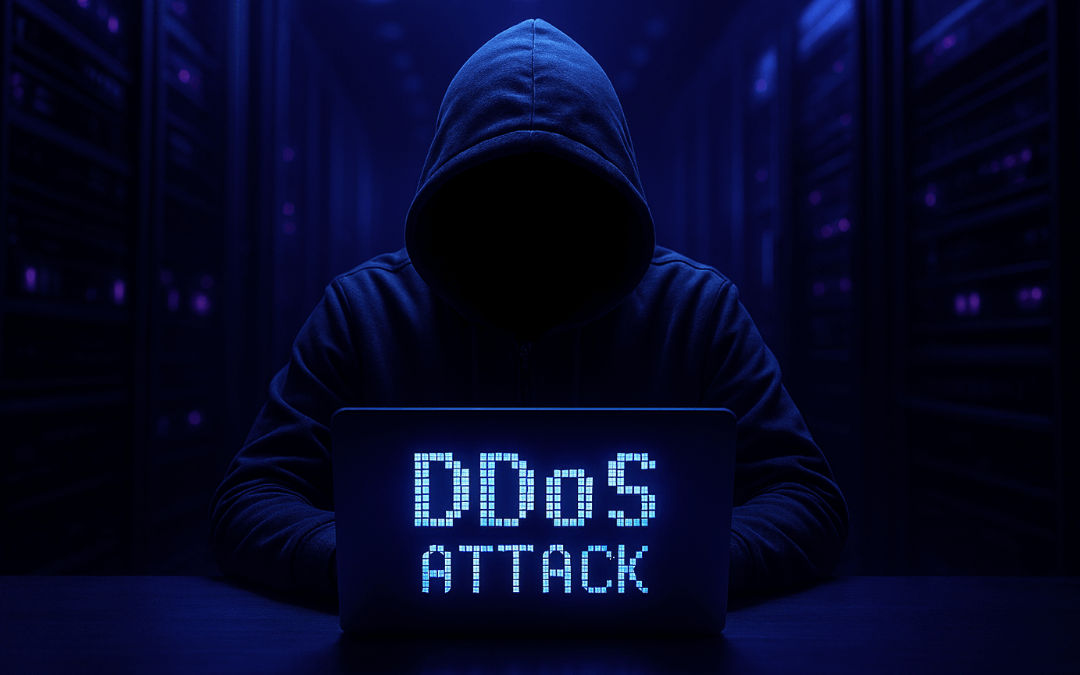In the ever-escalating arms race of cybersecurity, the 15 Tbps Azure DDoS attack in October 2025 turned the cloud into a full-fledged battleground. This record-breaking assault, measuring 15.72 terabits per second (Tbps) and nearly 3.64 billion packets per second, was unleashed from over 500,000 IP addresses targeting a public IP in Australia using high-rate UDP floods with minimal spoofing to evade easy detection. While Microsoft swiftly neutralized the threat, the 15 Tbps Azure DDoS attack serves as a stark reminder: cloud platforms like Azure, AWS, and Google Cloud are not only viable targets—they’re irresistible ones for cybercriminals.
The culprit? The Aisuru botnet, a Turbo Mirai-class network of compromised IoT devices including home routers and IP cameras from brands like T-Mobile, Zyxel, D-Link, and Linksys. As Azure Security’s senior product marketing manager Sean Whalen explained, “The attack originated from Aisuru botnet. Aisuru is a Turbo Mirai-class IoT botnet that frequently causes record-breaking DDoS attacks by exploiting compromised home routers and cameras, mainly in residential ISPs in the United States and other countries.” This botnet, which ballooned to around 300,000 bots after an April 2025 breach of a TotoLink router firmware server infected 100,000 devices, highlights a perfect storm of vulnerabilities that hackers exploit to turn everyday gadgets into weapons of mass disruption.
But why does this keep happening? Why do cloud services, designed for scalability and resilience, remain such juicy targets? Let’s break it down.
1. Scale Meets Vulnerability: The Allure of High-Impact Disruption
Cloud infrastructure is built to handle massive traffic—think petabytes of data flowing seamlessly across global data centers. This very scalability makes it an ideal canvas for DDoS artists. A successful attack doesn’t just slow services; it can halt entire ecosystems. The 15 Tbps Azure DDoS attack, equivalent to streaming millions of 4K videos simultaneously (per similar attacks mitigated by Cloudflare), demonstrates how hackers can amplify minor exploits into existential threats.Hackers love the cloud because one breach can ripple outward. Azure isn’t just hosting Microsoft’s tools; it’s powering enterprises worldwide, from e-commerce giants to healthcare providers.
Disrupting it means real-world chaos: lost revenue, eroded trust, and regulatory headaches under frameworks like GDPR or HIPAA. According to a 2025 Cloud Security Alliance report, DDoS attacks on cloud services surged 150% year-over-year, with financial motives (ransomware tie-ins) and hacktivism driving 70% of incidents. The 15 Tbps Azure DDoS attack, while not tied to extortion, underscores this: low-effort botnets can generate high-reward spectacles, often for bragging rights on dark web forums.
2. The IoT Explosion: A Bottomless Supply of Zombie Armies
At the heart of many cloud-targeted attacks, including the 15 Tbps Azure DDoS attack, lies the Internet of Things (IoT)—billions of undersecured devices ripe for hijacking. Routers, smart cameras, and DVRs often ship with default credentials or unpatched firmware, making them easy prey. The botnet’s growth via a firmware update server breach is a textbook example: hackers injected malware into legitimate updates, silently enlisting devices without user awareness.
Why does this fuel cloud attacks? Botnets like Aisuru provide distributed firepower—thousands of IPs from legitimate residential sources that blend into normal traffic, complicating defenses. Cloud providers, while investing in AI-driven mitigation (Microsoft’s Azure DDoS Protection, for instance, absorbed this hit without downtime), can’t fully police the endpoint ecosystem. A 2025 Verizon DBIR notes that 80% of breaches start with stolen credentials or unpatched vulnerabilities, many in IoT. As long as consumers prioritize convenience over security—leaving that smart fridge online with “admin/admin”—hackers will have an endless reservoir for building these digital hordes.
3. Economic Incentives: Low Cost, High Return on Investment
For attackers, targeting the cloud is a bargain. Building a botnet like Aisuru costs pennies compared to the damage inflicted. Tools for exploiting Realtek chips or Zyxel routers are commoditized on underground markets, and launching a DDoS requires minimal sophistication—random source ports and UDP floods, as seen in the 15 Tbps Azure DDoS attack, keep things simple and traceable only with advanced forensics. The payoff?
Cloud outages cost businesses an average of $9,000 per minute, per a 2025 Ponemon Institute study. High-profile hits like this one amplify the botnet’s “street cred,” attracting paying customers for future attacks. Nation-state actors, too, eye clouds for espionage; think SolarWinds or the 2024 AWS breach that exposed government data. With global cloud spending projected to hit $1 trillion by 2027 (Gartner), the stakes—and the temptations—are skyrocketing.
4. Evolving Tactics: From Brute Force to Stealthy Shadows
Gone are the days of crude floods; modern attacks layer sophistication. Aisuru’s minimal spoofing and focus on a single IP mimicked legitimate traffic, forcing defenders to rely on behavioral analytics rather than basic filtering. This evolution mirrors broader trends: hybrid attacks combining DDoS with data exfiltration or zero-day exploits. Cloud misconfigurations—open S3 buckets, anyone?—exacerbate this, with 2025 seeing a 200% rise in API-based intrusions (per Akamai’s State of the Internet report).Moreover, the cloud’s multi-tenant nature means one vulnerability can compromise shared resources. Hackers probe for weak spots in serverless architectures or Kubernetes clusters, turning providers’ strengths (elasticity) into weaknesses (expanded attack surfaces).
Securing the Skies: How Organizations Can Fight Back Against the 15 Tbps Azure DDoS Attack
The 15 Tbps Azure DDoS attack was a win for Microsoft—they detected and mitigated it in real-time, proving proactive defenses work. But for your business, complacency is the real threat. Here’s how to harden your cloud posture:
- Layered DDoS Protection: Enable native tools like Azure DDoS Protection Standard or AWS Shield Advanced, and pair them with third-party services (e.g., Cloudflare or Imperva) for always-on scrubbing.
- IoT Hygiene: Audit connected devices rigorously—enforce multi-factor authentication (MFA), regular patching, and network segmentation. Tools like Shodan can scan for exposed assets.
- Zero-Trust Architecture: Assume breach. Implement least-privilege access via IAM roles, and use AI for anomaly detection in traffic patterns.
- Incident Response Drills: Simulate attacks quarterly. The Aisuru event shows speed matters—Microsoft’s rapid takedown stemmed from pre-built playbooks.
- Stay Informed: Monitor threat intel feeds from sources like Microsoft’s Digital Defense Report or CISA alerts. Early warning on botnets like Aisuru can mean the difference between disruption and downtime.
In conclusion, the cloud’s viability as a hacker target boils down to its paradox: unparalleled power paired with pervasive blind spots. The 15 Tbps Azure DDoS attack wasn’t a fluke—it’s a harbinger. As botnets grow smarter and IoT proliferates, cybersecurity pros must evolve faster. At Black Belt Secure, we’re committed to demystifying these threats so you can sleep soundly (or at least patch that router). What’s your biggest cloud worry? Drop a comment below—we’d love to hear and cover it next.
Stay secure,
The Black Belt Secure Team
Click here to read more blog articles!

